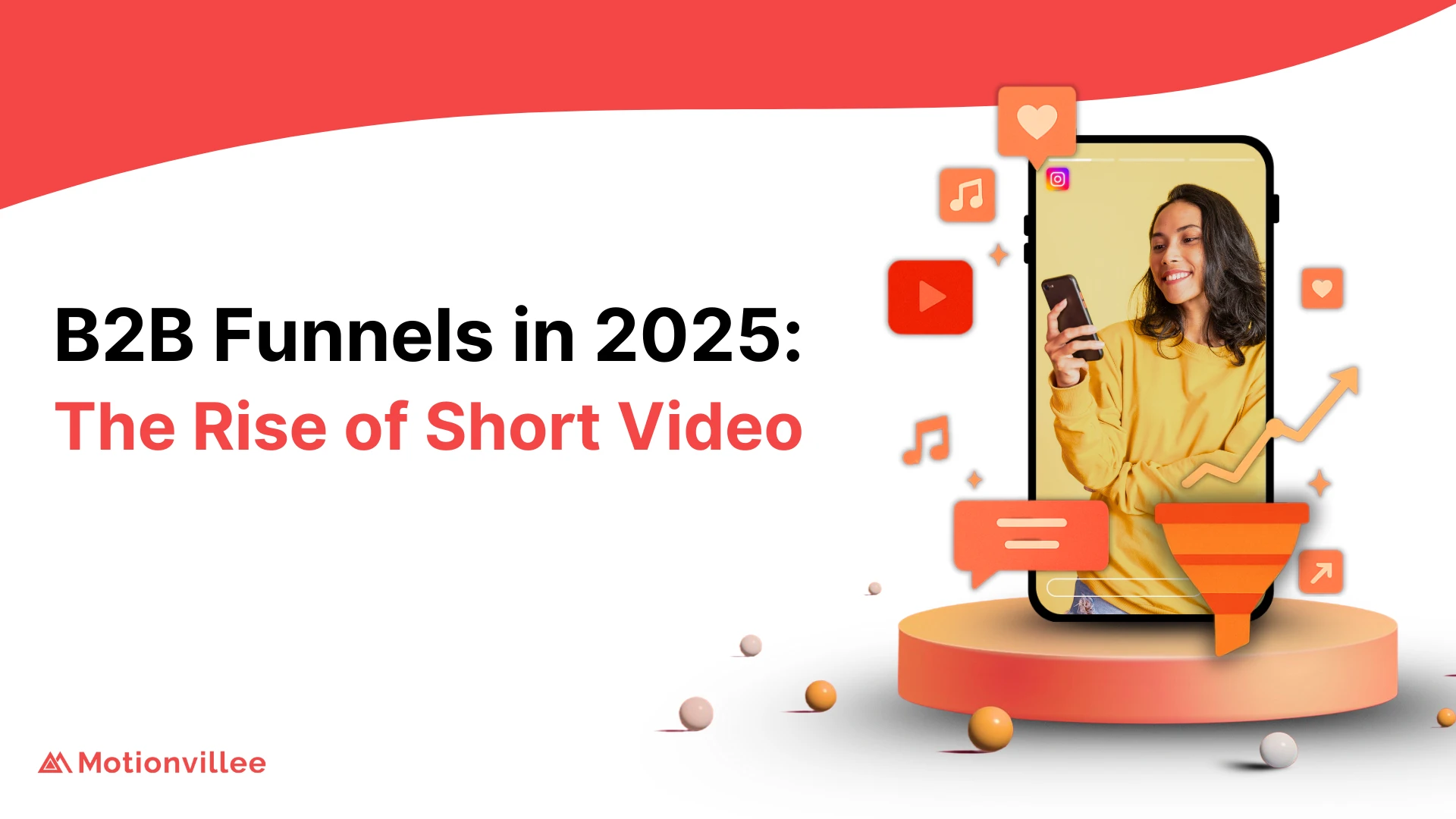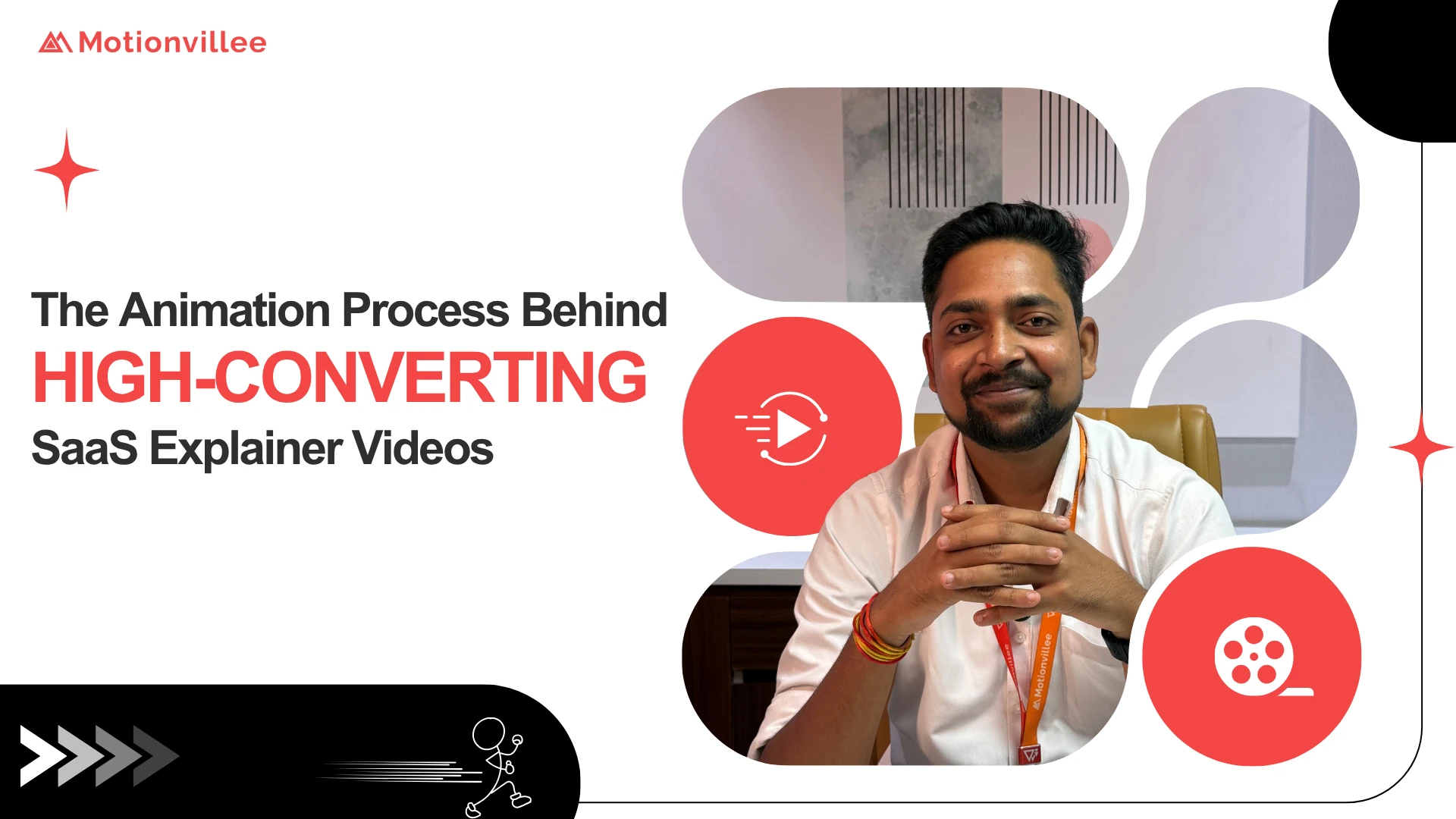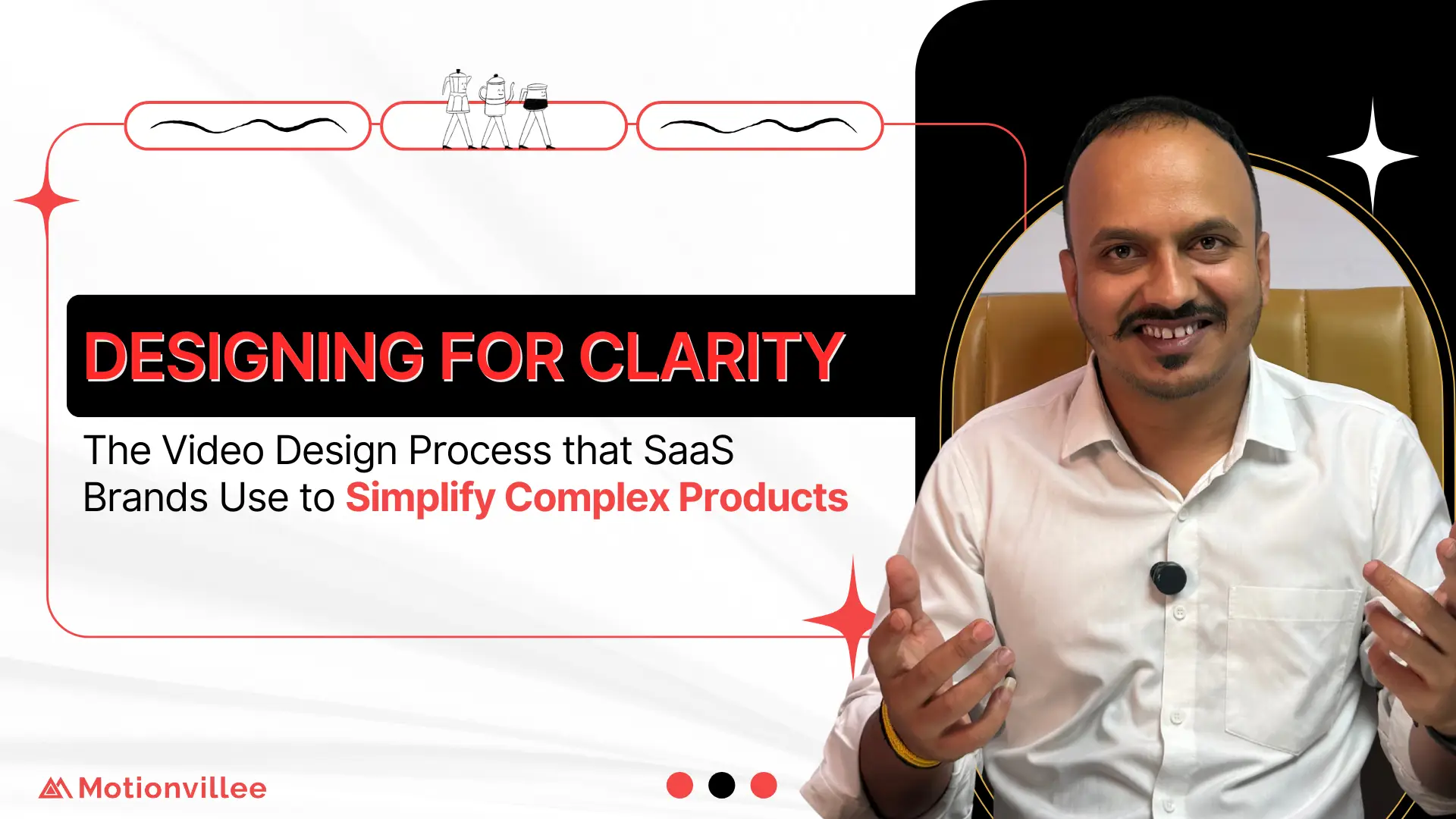What Are the Key Short Form B2B Video Trends in 2025?
In 2025, Short-Form Video Trends in B2B focus on authentic clips, expert insights, and quick product explainers shared on LinkedIn and YouTube Shorts, where decision-makers are spending more time.
These formats work because buyers now want content that is fast, clear, and visual. Decision-makers are spending more time on platforms that prioritize short video, which makes it an essential part of the funnel.
The value of short-form is that it simplifies complex ideas into snackable insights while building trust at scale. Whether it is a micro-demo, a testimonial, or a thought leadership clip, B2B brands can guide prospects forward with precision.
For companies investing in B2B marketing videos, these trends highlight a clear shift: attention is limited, but strong storytelling delivered in under a minute can still create impact.
Trend 1: How Is LinkedIn Prioritizing Short-Form B2B Videos?
LinkedIn is prioritizing short-form B2B videos by giving native video posts and Shorts higher visibility in feeds.
For brands, this means a greater opportunity to reach decision-makers where they are most active. Content that is concise, professional, and tailored for the platform often outperforms longer posts or static visuals.
The rise of LinkedIn short-form videos is also making it easier for marketers to expand awareness without relying only on paid ads. By posting authentic thought leadership clips or quick updates, companies can build trust at the top of the funnel.
To maximize impact, B2B brands should:
- Post videos between 30–60 seconds.
- Add captions for silent viewing.
- Share consistent clips that reinforce expertise.
This is where short-form social media videos become an important asset for LinkedIn growth.
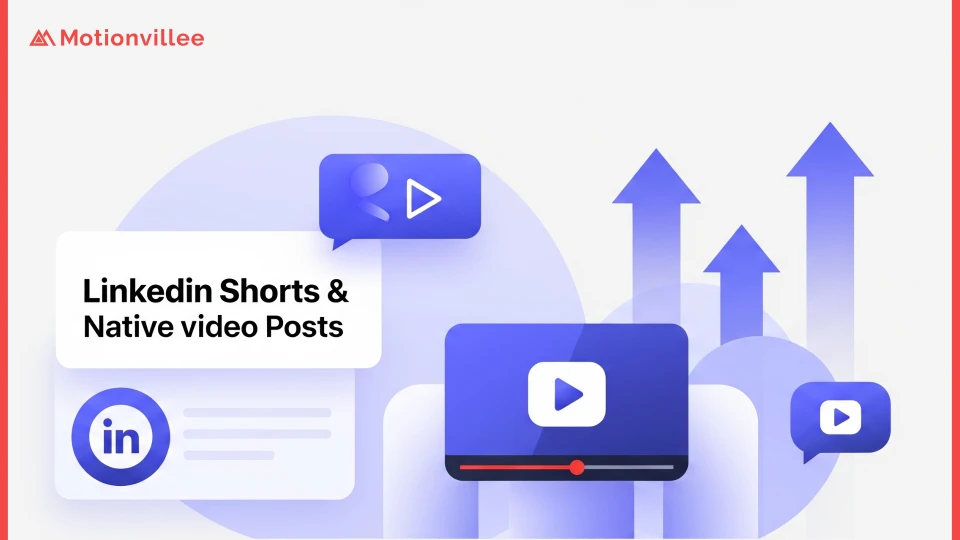
Trend 2: Why Are Personalized Short Videos Winning in Outreach?
Personalized short videos win in outreach because they feel direct, relevant, and human.
Instead of sending long emails, sales teams now record short clips that address prospects by name and speak to their specific challenges. This makes the message stand out in a crowded inbox or LinkedIn DM.
The benefit of personalized B2B video outreach is clear: higher open rates, stronger responses, and more booked calls. Short clips create a sense of connection while still respecting the buyer’s time.
Effective formats include:
- A 30-second intro from a sales rep.
- A quick walkthrough of how a solution solves one pain point.
- A thank-you video after a meeting.
These videos act as natural sales enablement videos, helping teams build relationships faster.
Trend 3: How Do Product Teasers Spark Buyer Interest?
Product teasers spark buyer interest by creating curiosity before a full launch or demo.
Instead of revealing every feature at once, teasers highlight a single benefit or capability that gets people to want more. This approach works especially well in B2B funnels, where buyers often need multiple touches before committing to a demo.
Short product teaser videos can take different forms, such as:
- A countdown to a new release.
- A 20-second highlight of a unique feature.
- A social clip that directs viewers to a longer product demo.
By using teasers strategically, brands keep prospects engaged throughout the buyer journey. Well-crafted product demo videos make the next step feel natural, moving the audience from curiosity to conversion.
Trend 4: Why Are Customer Testimonial Shorts Building Instant Trust?
Customer testimonial shorts build instant trust because buyers believe other customers more than marketing claims.
In B2B, where decisions involve risk, seeing a peer or industry leader endorse a solution reduces hesitation. A 30–60 second clip with a customer explaining how they solved a problem can be more powerful than a full case study.
The effectiveness of customer testimonial videos comes from their authenticity. They feel unscripted, relatable, and credible. For busy decision-makers, a short testimonial is often all they need to take the next step.
Examples include:
- A client describing ROI in their own words.
- A partner highlighting ease of implementation.
- A user sharing before-and-after results.
For Motionvillee clients, these clips double as brand storytelling videos, turning real experiences into persuasive content.
Trend 5: How Do Event Recap Shorts Extend Funnel Reach?
Event recap shorts extend funnel reach by turning a single event into evergreen marketing content.
Instead of relying on one-time attendance, brands can create short highlight reels that capture the energy, key moments, and takeaways of an event. These clips can then be shared on LinkedIn, YouTube Shorts, and email campaigns, reaching both attendees and a wider audience.
The strength of event recap short videos is that they keep momentum alive even after the event ends. Decision-makers who missed the event still engage with the brand through the highlights.
Best practices include:
- Show top speakers or sessions in under 60 seconds.
- Capture networking and behind-the-scenes energy.
- Add a CTA to access full event resources.
Repurposing moments into corporate event videos helps brands maximize ROI from their investment in conferences and summits.
Trend 6: How Are Micro-Demos Simplifying SaaS Products?
Micro-demos simplify SaaS products by breaking down complex solutions into easy-to-digest clips.
Instead of long product tours, SaaS companies are using short videos to show one feature or workflow at a time. This helps buyers understand value quickly without feeling overwhelmed.
The appeal of SaaS micro demo videos lies in their clarity. Each clip tackles one pain point, connects it to a benefit, and makes it easier for viewers to imagine using the product.
Micro-demos work well in:
- LinkedIn posts to spark curiosity.
- Email follow-ups to reinforce value.
- Landing pages to shorten buying cycles.
For growing SaaS brands, these clips act as SaaS demo videos, creating a clear bridge between awareness and product adoption.
Trend 7: Why Is Vertical Video the Default for B2B Social?
Vertical video is the default for B2B social because most decision-makers consume content on mobile devices.
Platforms like LinkedIn, YouTube Shorts, and TikTok are all designed with vertical-first content in mind. Brands that continue to post horizontal-only videos risk losing visibility and engagement.
The rise of vertical video B2B marketing is more than just a design choice. It reflects how audiences prefer to interact with content, full-screen, immersive, and mobile-optimized.
To adapt effectively, B2B marketers should:
- Film or design videos in 9:16 format.
- Add captions for silent scrolling.
- Place the CTA within the first 5 seconds.
This shift ensures that short-form B2B content matches both platform algorithms and user behavior.
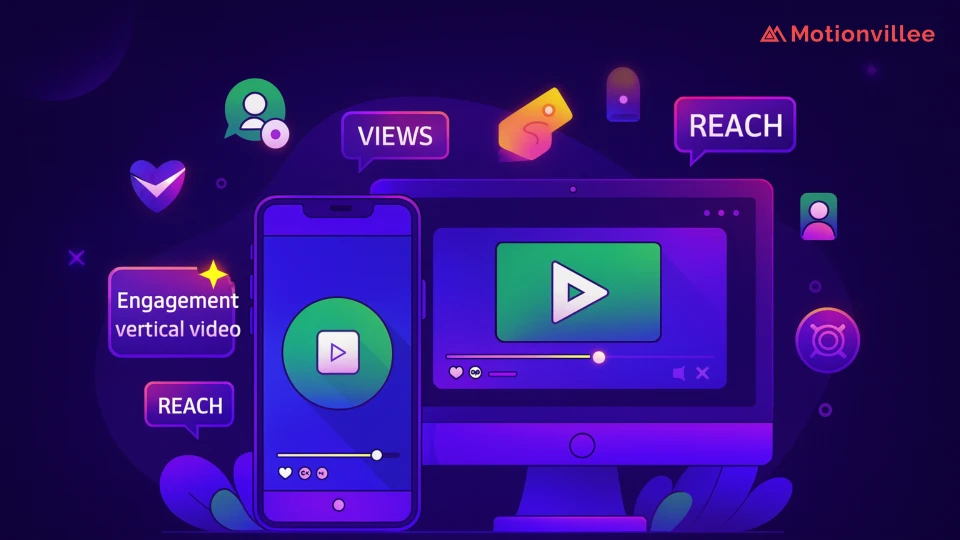
Trend 8: How Are Storytelling Shorts Replacing Case Studies?
Storytelling shorts are replacing case studies because they communicate results faster and more memorably.
Traditional PDFs often go unread, but a 60-second video with a clear problem-solution-outcome arc captures attention immediately. These videos allow buyers to grasp the impact without sifting through long documents.
The power of storytelling in short videos is that they combine emotion with proof. By framing success stories visually, brands can connect with audiences on both rational and emotional levels.
Examples include:
- A quick story of how a client saved time or money.
- A visual before-and-after scenario.
- A customer journey shown in 3 simple steps.
With the right creative approach, these videos function as animated explainer video content, offering clarity and persuasion in one format.
Trend 9: How Do Behind-the-Scenes Shorts Build Authenticity?
Behind-the-scenes shorts build authenticity by showing the people, culture, and effort behind a brand.
In B2B, where products often feel abstract or technical, a glimpse of the team or process makes the company more relatable. Short BTS clips can feature workspace tours, product assembly, or even casual team moments that humanize the brand.
The appeal of behind-the-scenes B2B video is that it builds trust. Buyers feel more confident when they see the real faces and values behind the product.
Examples that work well include:
- A quick clip of the team preparing for an event.
- A short walkthrough of how a product is made.
- Leadership sharing insights in an informal setting.
This format reminds audiences that B2B decisions are still made by people, not just businesses.
Trend 10: Why Are Paid Ads Going Shorter in 2025?
Paid ads are going shorter in 2025 because audiences lose interest quickly, and concise formats drive stronger results.
Marketers are finding that 15–30 second ads often outperform longer ones by reducing drop-off and delivering the message upfront. Shorter content also fits seamlessly into LinkedIn and YouTube Shorts placements.
The benefit of short video ads ROI is measurable: lower cost per view and higher click-through rates. In crowded feeds, shorter ads give brands a better chance to stand out without overwhelming the viewer.
To optimize results:
- Hook viewers in the first 3 seconds.
- Keep one message per ad.
- End with a clear CTA.
This makes short ads one of the most effective types of B2B video ads in 2025.
Trend 11: How Are Animated Explainers Becoming More Compact?
Animated explainers are becoming more compact by focusing on one message in 30–60 seconds instead of long-form walkthroughs.
Modern buyers do not want lengthy videos that overwhelm them with detail. Instead, they prefer sharp, clear explainers that deliver one idea quickly.
The rise of animated short explainer videos is making it easier for B2B marketers to communicate value across different funnel stages. These videos can highlight a key feature, illustrate a workflow, or introduce a new concept without dragging on.
Compact explainers work best when they:
- Use simple visuals that clarify, not complicate.
- Focus on benefits rather than technical specs.
- Include a quick CTA at the end.
This shift shows how animated explainers remain vital, but now in a faster and leaner format.
Trend 12: Why Are Sales Teams Sending Quick Video Intros?
Sales teams are sending quick video intros because they help prospects connect with a person before a meeting.
Instead of relying on long emails or LinkedIn text messages, reps use short 20–30 second clips to introduce themselves and explain the purpose of a call. This builds familiarity and trust right away.
The value of quick video intros for sales is that they humanize outreach. Prospects are more likely to respond when they see and hear the person behind the message.
Effective intro videos include:
- A personal greeting with the prospect’s name.
- One sentence on how the solution helps their role.
- A friendly CTA to book a meeting.
This approach helps sales teams cut through noise and make a strong first impression.
Trend 13: How Do Poll + Q&A Videos Drive LinkedIn Engagement?
Poll and Q&A videos drive LinkedIn engagement by inviting viewers to interact instead of passively watching.
These short videos often pose a simple question or use on-screen polls to collect instant responses. By prompting action, they increase comments, clicks, and visibility in the feed.
The strength of interactive B2B video content lies in its ability to create two-way conversations. For marketers, this not only boosts engagement but also provides insights into audience preferences.
Examples that work well include:
- A 30-second video with a poll about industry challenges.
- A Q&A clip where experts respond to common buyer questions.
- A short video that asks viewers to vote on a product feature.
This trend is proof that interactivity keeps audiences connected longer and adds value to the funnel.
Trend 14: Why Are Finance and Tech Brands Leading in Short-Form?
Finance and tech brands are leading in short-form because they use video to simplify complex ideas and establish authority.
In industries where buyers face steep learning curves, short clips make information accessible while building brand trust. Thought leadership content and product explainers are especially effective.
The rise of short-form video in finance & tech shows how these sectors adapt quickly to attention spans and platform trends. By packaging data, insights, and outcomes into bite-sized videos, they stay ahead of the competition.
Examples include:
- A fintech brand sharing 60-second explainer videos.
- A cybersecurity firm posting quick risk-prevention tips.
- A SaaS company sharing product insights on LinkedIn.
These industries prove that even technical fields can thrive with short-form storytelling.
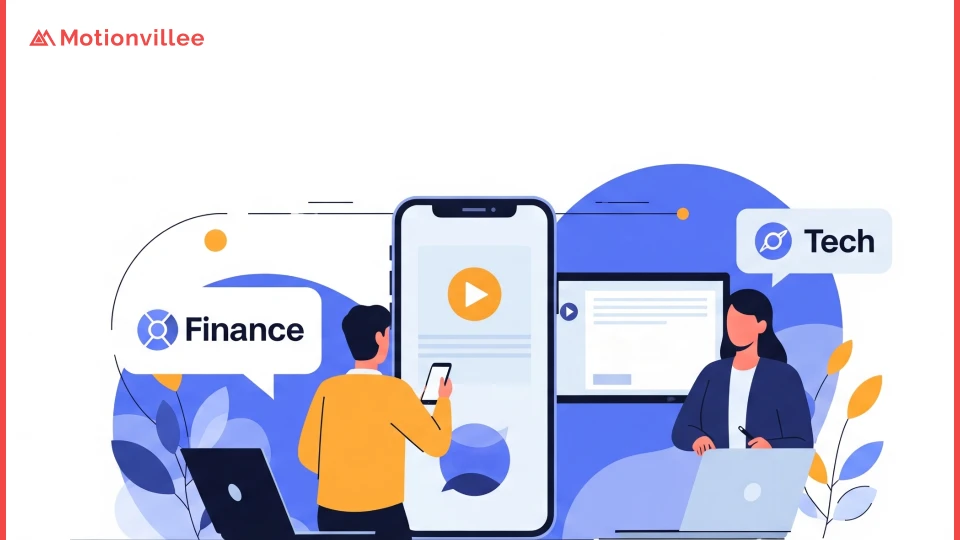
Trend 15: How Are Educational Shorts Improving Customer Retention?
Educational shorts improve customer retention by helping users learn faster and get more value from a product.
Instead of long manuals or hour-long tutorials, short clips break down tasks into clear, simple steps. This supports onboarding, training, and long-term product adoption.
The effectiveness of B2B educational video shorts is that they reduce frustration and increase customer satisfaction. Users who feel supported are more likely to stay loyal and expand their usage.
Best practices for retention-focused content include:
- Create 30-second tutorials for common tasks.
- Add tooltips and screen recordings.
- Share tips on LinkedIn or via email campaigns.
As part of customer success strategies, educational video content strengthens retention and creates advocates.
Trend 16: Why Is Humor Helping B2B Shorts Stand Out?
Humor helps B2B shorts stand out because it makes technical content more relatable and memorable.
Even in professional settings, lighthearted clips capture attention faster than purely formal messaging. Humor also humanizes brands and makes them more approachable to buyers.
The appeal of humor in B2B short videos lies in its ability to spark emotional connection. A clever punchline or playful scenario can stick in the viewer’s mind long after they scroll past.
Examples that resonate:
- A funny take on common industry challenges.
- Short parodies about daily frustrations in business.
- Light humor in product explainers to ease complex topics.
When done thoughtfully, humor balances professionalism with personality, creating stronger recall.
Trend 17: How Are Compliance-Friendly Shorts Helping Regulated Brands?
Compliance-friendly shorts help regulated brands by breaking down strict rules into simple, digestible messages.
In industries like finance, healthcare, and cybersecurity, compliance can feel overwhelming. Short clips make it easier to explain policies, updates, or best practices in a way that employees and customers understand.
The benefit of compliance short videos is that they reduce risk while keeping audiences informed. By using visual examples and plain language, brands ensure accuracy without losing attention.
Examples include:
- A 45-second video summarizing new industry regulations.
- A quick reminder about data protection policies.
- A short FAQ on compliance do’s and don’ts.
This approach keeps messaging clear, professional, and aligned with industry standards.
Trend 18: Why Is Cross-Platform Distribution Key for B2B Shorts?
Cross-platform distribution is key because it maximizes reach by repurposing the same video for different channels.
A single clip can be formatted for LinkedIn, YouTube Shorts, X, and even email campaigns. This saves time while ensuring consistent messaging across the funnel.
The advantage of repurposing short videos B2B is that it expands exposure without extra production costs. By tailoring captions, aspect ratios, or CTAs for each platform, marketers extend impact while staying efficient.
Tips for cross-platform success:
- Use vertical format for LinkedIn and YouTube Shorts.
- Add subtitles for silent viewing.
- Match CTAs to each channel’s strengths.
This makes distribution as strategic as creation.
Trend 19: How Are AI Tools Accelerating Short Video Production?
AI tools accelerate short video production by reducing editing time and enabling quick personalization.
From auto-captioning to AI-driven templates, these tools allow B2B marketers to create polished content faster than traditional workflows. The result is more frequent posting without stretching budgets.
The rise of AI short video production also helps brands test multiple variations for ads or campaigns. This means marketers can quickly learn what resonates and adjust strategy.
Examples of AI usage include:
- Automatic script generation and voiceovers.
- Instant resizing for different platforms.
- Smart recommendations for captions and keywords.
AI doesn’t replace creativity, but it makes execution more efficient.
Trend 20: Why Are Multi-Language Shorts Expanding Global B2B Reach?
Multi-language shorts expand global reach by making content accessible to diverse markets.
SaaS, fintech, and enterprise tech brands often sell internationally, and localized content builds trust with buyers in new regions. Adding translations or dubbing makes videos more inclusive and relatable.
The benefit of multi-language short videos is that they remove barriers to entry. Even a 30-second clip with captions in multiple languages can significantly increase engagement.
Practical applications include:
- Subtitles in Spanish, French, or German for global campaigns.
- Regional versions of the same demo video.
- Using AI to speed up translation workflows.
This trend ensures B2B brands are not limited by geography in 2025.
Trend 21: How Are Metrics Refining Short-Form Video Strategy?
Metrics refine short-form video strategy by showing what content truly drives engagement and conversions.
B2B marketers are tracking watch time, click-through rates, and conversion paths to understand which clips move prospects forward in the funnel. This data-driven approach ensures that future videos are sharper and more effective.
The benefit of measuring B2B video performance is clear: it eliminates guesswork. Brands can double down on what works while cutting formats that fail to deliver.
Key metrics to track include:
- Average watch duration.
- Click-through rate on CTAs.
- Lead conversions from video campaigns.
With consistent measurement, short-form video becomes a repeatable growth lever.
Trend 22: Why Are Retargeting Campaigns Relying on Short Videos?
Retargeting campaigns rely on short videos because they keep prospects engaged until they are ready to buy.
Instead of sending long-form ads, B2B brands are using 15–30 second reminders that highlight one benefit, customer proof, or demo invite. These quick touches maintain visibility without overwhelming the audience.
The strength of retargeting with short videos is that it feels personal and timely. Buyers are reminded of the brand at key decision moments, which improves conversion rates.
Effective retargeting videos include:
- A testimonial clip shown to mid-funnel prospects.
- A short reminder about a free trial or demo.
- A highlight of one feature to re-engage interest.
This keeps the funnel warm and active.

Trend 23: How Do Strong CTAs in Shorts Drive Conversions?
Strong CTAs in shorts drive conversions by guiding viewers to take immediate action.
In short-form content, attention is limited, so CTAs must be clear, concise, and easy to act on. Whether it’s booking a demo or downloading a guide, the CTA turns interest into pipeline.
The impact of strong CTAs is that they move prospects from passive viewing to measurable engagement. Without them, even the best video risks being just entertainment.
Best practices for CTAs:
- Place them within the first 10–15 seconds.
- Use direct language like “Book a Demo” or “Get Started.”
- Align the CTA with the viewer’s funnel stage.
This ensures every video has purpose and direction.
How Should B2B Brands Use Short-Form Video Trends in 2025?
B2B brands should use short-form video trends in 2025 to simplify complex ideas, build trust quickly, and drive conversions across the funnel.
These 23 strategies show how formats like micro-demos, testimonials, and vertical-first ads align with how decision-makers consume content today. The power of short video lies in its ability to make the message clear in under a minute.
For brands looking to capture more attention and turn it into results, short-form is no longer optional. It is the standard for modern funnels.
If you want to apply these insights to your business, schedule a call with Motionvillee and explore how tailored short-form strategies can boost your growth.


